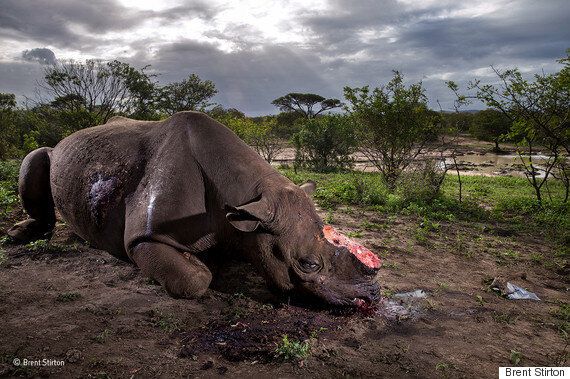
When I moved to London 12 years ago, one of the first things I did was head to the Natural History Museum to visit the Wildlife Photographer of the Year exhibition. I clearly remember walking amongst the backlit displays, mesmerised by the powerful images that somehow could convey a thousand words, and struck by the gamut of emotions they managed to evoke in me. I could never have imagined back then that one day I would get the chance to host these inspirational awards in the Museum's splendid Hintze Hall, first in the shadow of Dippy the beloved diplodocus, and then, for the first time this year, under the magnificent diving skeleton of the largest animal that ever roamed the earth, a blue whale named Hope.
The spectacular reimagining of Hintze Hall, with Hope as its centrepiece, signals the transformation of the Natural History Museum as a museum for the future with a resolute ambition to communicate the urgent need to protect our planet and inspire change in us all. It's an exciting and welcome evolution for the Museum, and one that is also reflected in the Wildlife Photographer of the Year awards. The competition certainly has come a long way since its inception in 1965. It began with just three categories and 500 entries, but now, in its 53rd year, it boasts 17 categories and has attracted almost 50,000 entries from 92 countries around the globe.
Every year the main ambition of the exhibition is to capture the extraordinary diversity of life on earth and to reignite our inherent passion and curiosity about the natural world. But in a world that is bowing under the pressure of our human footprint like never before, this world class competition also serves as a much needed mirror to our actions, reminding us about our complex relationship with the natural word, and challenging our behaviours and perceptions about the wildlife we share this planet with.
Brent Stirton's winning image this year of a butchered black rhino, its horn hacked off by poachers who were "working to order", is an uncomfortable but timely reminder of how immoral and flawed these perceptions can sometime be. 'Memorial to a Species' is a powerful image, captured during a follow up investigation to the one Brent carried out in 2012. The sad truth is, he was compelled to tell the story again because the world still has not paid enough attention to the plight of the rhino. He decided to immerse himself again, at great personal risk, into the world of an illegal trade involving highly organised criminal syndicates, a trade that is fuelled by an ever increasing demand from Asia for rhino horn - made of the same material as our nails - all because of a long held and ludicrous belief that it has medicinal value. More than 1,000 black rhinos are poached every year in South Africa alone, with the entire population decreasing by almost 98% in the last 50 years alone.
Brent's comment on this atrocity mirrors those of countless conservationists, rangers, vets and wildlife advocates who desperately continue to fight for the rights of these magnificent animals: "We need to question what value system we are applying to wildlife. What does it say about our civilisation that we have made wildlife into a commodity?"
The winning photograph is a raw and compelling one that has ignited heated discussions on social media, regarding its "horrific" and "unsuitable" nature. But as a science communicator who struggles every day with the thought that I am not doing enough to inspire a fundamental change in how we care for our planet and its wild places, I am in awe of what it took to tell this story and I applaud the image. It has been shared by the world's media, embark on a world-wide tour as part of the exhibition and will be seen by millions. Thanks to this outstanding competition, it has the power to inspire change.
Brent was clearly filled with a gamut of emotions when he accepted his award, not least because he must have been carrying the weight of all that he had experienced during his investigation. He witnessed more than 30 similar crime scenes to the one in his winning image while documenting this horrific story. He collected his award to a standing ovation and spoke about struggling to maintain any faith in the human race after what he had seen. And then he thanked everyone in Hintze Hall that night for helping him to regain it, for, he said, they were all an inspiration to him, they were proof that we have the capacity to make things right as a global species.
But all I could think about was how this one man, through his extraordinary passion and herculean dedication to a cause he so fiercely believes in, renewed the entire room's faith in humanity that night. As long as there are passionate, curious, creative and brave humans in the world there is hope. The blue whale of Hintze hall is a reminder that we are capable of saving a species we once drove to the brink of extinction. Each and every one of us has the capacity to be responsible custodians of this precious, beautiful and humbling planet of ours.
Go to the Wildlife Photographer of the Year exhibition. Stand in front of this inconvenient, uncomfortable and difficult image. Step closer to it. Allow it to move you and compel you to be the change the world needs before it's too late. Before the rhino and countless other magnificent species disappear from our planet forever.
http://www.nhm.ac.uk/discover/the-brutal-reality-of-rhino-poaching.html